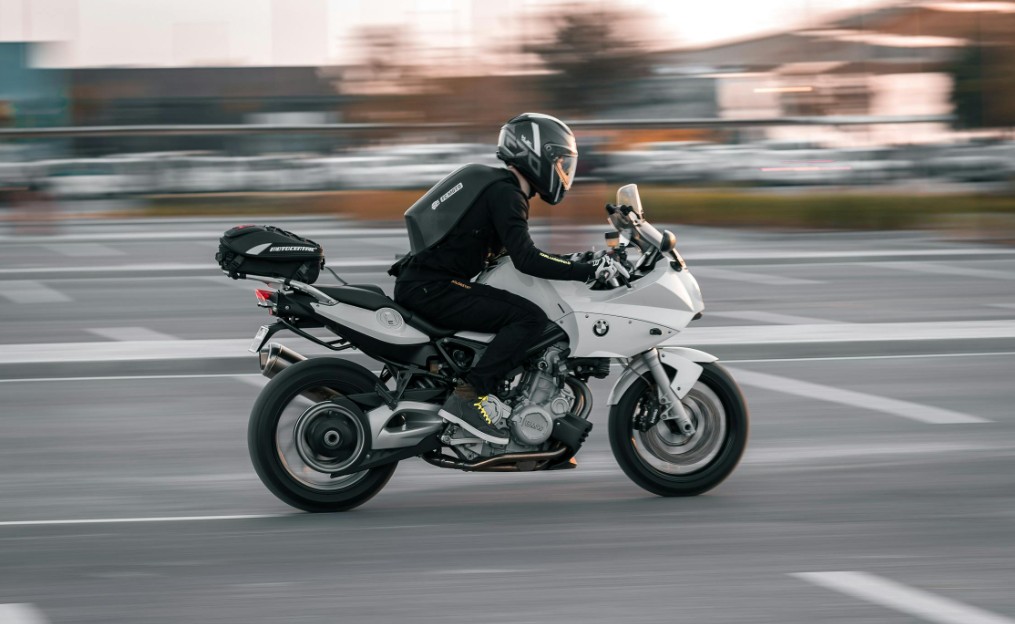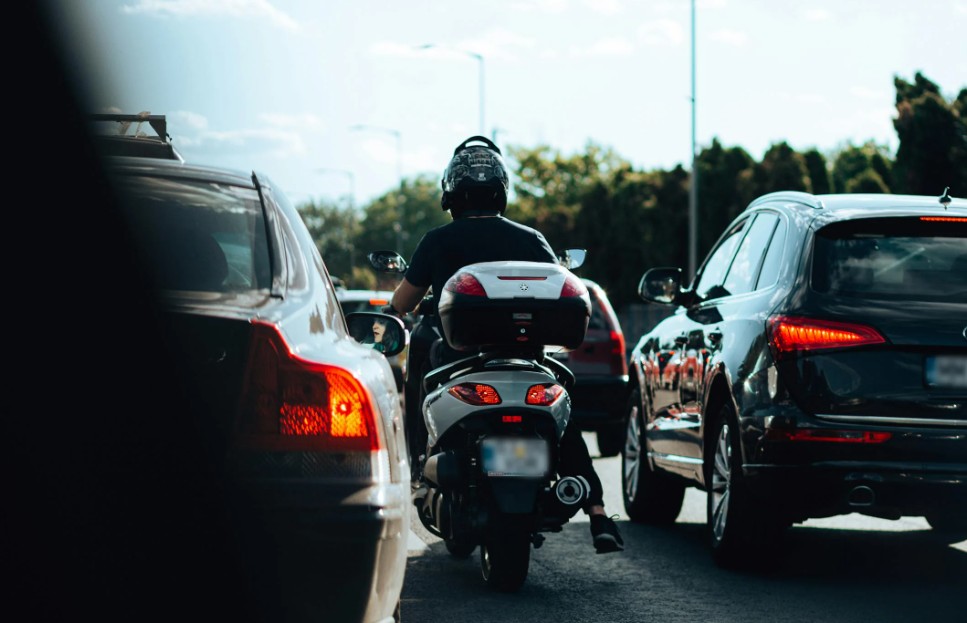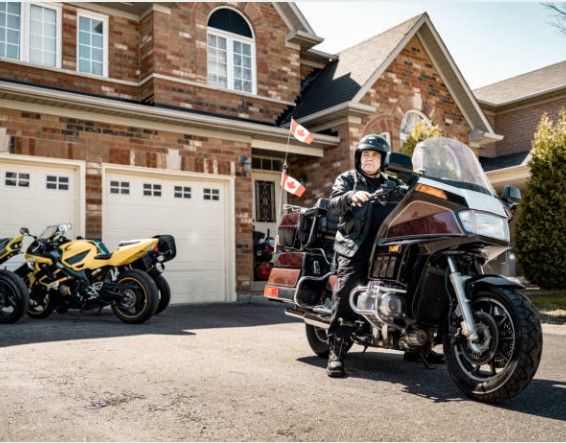When I first learned to drive, one of the most surprising lessons was just how different motorcyclists experience the road compared to those of us in cars. That difference becomes even more significant in windy conditions. Over time, I realized the importance of why should you allow extra room while overtaking a motorcyclist on a windy day, not just as a courtesy—but as a vital safety precaution. Here’s everything I’ve learned about why this small adjustment in driving behavior can make a massive difference on the road.
What Makes Motorcyclists More Vulnerable in Windy Weather?
Impact of Crosswinds on Two-Wheeled Vehicles
Unlike cars, motorcycles have a smaller surface area on the road and weigh far less. This makes them especially susceptible to crosswinds, which can push them sideways with little warning. I’ve seen motorcyclists being nudged by strong gusts, especially when coming out from behind large vehicles or overtaking in open areas like bridges and motorways.
Why Motorcycles Swerve More Easily Than Cars?
Because they balance on two wheels, even a slight force from the wind or uneven road surface can cause a motorcycle to wobble. The rider may have to quickly correct their position, sometimes swerving into adjacent lanes. It’s not always a sign of poor control—it’s often a reaction to the environment.
How Does the Highway Code Guide Drivers Around Motorcyclists?

Key Sections of the Highway Code to Remember
The UK Highway Code clearly states that motorcyclists, cyclists, horse riders, and pedestrians are among the most vulnerable road users. Rule 213 highlights the need to give motorcyclists plenty of space and to be particularly cautious in windy or wet weather.
Safe Overtaking Distance Rules in the UK
While overtaking any vehicle requires space and patience, overtaking motorcyclists demands extra care. The Highway Code recommends giving them at least 1.5 metres of room when passing at speeds up to 30mph, and even more at higher speeds. On windy days, I aim to double that distance, giving them all the space they need to adjust without fear of collision.
What Are the Dangers of Overtaking Too Closely?
Risk of Clipping or Pushing a Rider Off Balance
Passing too closely can lead to accidental contact or “clipping”, especially if the rider is pushed sideways by a gust. Even if I don’t physically touch the rider, the pressure wave caused by a fast-moving car can destabilize them.
How Does Wind Pressure From Your Car Affect Riders?
Most drivers don’t realize how much air a moving car displaces. When I overtake quickly and closely, my car creates a mini turbulence, which can feel like a sudden shove to a motorcyclist. On a windy day, that force combines with natural gusts, making it even more unpredictable.
When Should I Avoid Overtaking a Motorcyclist?
Identifying Unsafe Weather Conditions
If I see tree branches swaying, dust blowing across the road, or road signs shaking, I take that as a red flag. Those signs tell me it’s a windy day, and overtaking a motorcyclist might not be the best idea at that moment.
Reading Road Positioning and Rider Behaviour
Sometimes riders move slightly within their lane to avoid potholes or react to gusts. If I notice a motorcyclist doing that, I hold back. I’ve learned it’s safer to wait than to rush a dangerous overtake.
How Much Space Should I Leave While Overtaking in Windy Conditions?

When it comes to overtaking a motorcyclist, more room equals more safety. Here’s what I follow:
- Minimum of 2 meters when overtaking in windy conditions
- Lower my speed slightly to reduce wind pressure
- Check rear-view and blind spots carefully before pulling out
- Avoid overtaking near junctions, bends, or hill crests
By giving more space, I’m allowing the motorcyclist the room they might need to correct their position safely without worrying about me passing too close.
What Can I Do to Improve My Awareness and Reaction Time?
Defensive Driving Techniques
I try to always drive with anticipation, scanning ahead for motorcyclists and other vulnerable road users. Keeping a 3-second following distance, avoiding distractions, and using mirrors frequently helps me stay aware of who’s around me.
Monitoring Weather Forecasts and Roadside Clues
Before long drives, I check local weather updates. If high winds are forecasted, I prepare to drive more cautiously—especially around open stretches of road, bridges, and coastal routes where wind is strongest.
Quick Comparison Table – Overtaking in Normal vs Windy Conditions
| Overtaking Scenario | Normal Weather | Windy Weather |
|---|---|---|
| Safe Passing Distance | 1.5 to 2 metres | 2 to 3 metres or more |
| Suggested Speed | The normal flow of traffic | Reduced to minimize wind force |
| Motorcyclist Stability | Generally steady | Can swerve or lean unpredictably |
| Overtaking Confidence | Usually straightforward | Should be cautious and deliberate |
| Driver’s Responsibility | Standard awareness | Extra attention to surroundings |
Common Misconceptions About Passing Motorcyclists
They’ll Move Out of the Way
Some people assume that motorcyclists can simply make space or speed up. That’s not always the case. Windy conditions limit their control, and expecting them to react for me is both unrealistic and unsafe.
They’re Fast and Nimble Enough to Handle Wind
While bikes are quick, they’re also light and exposed. I used to believe they could easily handle wind—but after seeing one almost toppled by a gust, I now know better. Nimbleness doesn’t equal immunity to wind.
How Can I Contribute to Safer Roads for Everyone?

Here are a few habits I’ve developed that contribute to safer driving, especially around motorcyclists:
- Give extra room when overtaking, especially in windy weather
- Be patient – a few seconds delay is better than a dangerous pass
- Signal early and avoid sudden manoeuvres
- Stay calm and alert in unpredictable conditions
- Share knowledge with other drivers, especially new learners
Conclusion: My Final Thoughts on Giving Motorcyclists Extra Room
After years of driving, one truth has stuck with me: motorcyclists rely on my awareness as much as their own skills to stay safe. When it’s windy, the risks increase dramatically—and giving extra room while overtaking a motorcyclist on a windy day isn’t just good practice; it’s essential. A little space can mean the difference between a smooth journey and a life-altering accident.
So next time I approach a motorcyclist on a breezy stretch of road, I remind myself: I’m not just overtaking a bike—I’m protecting a life.






